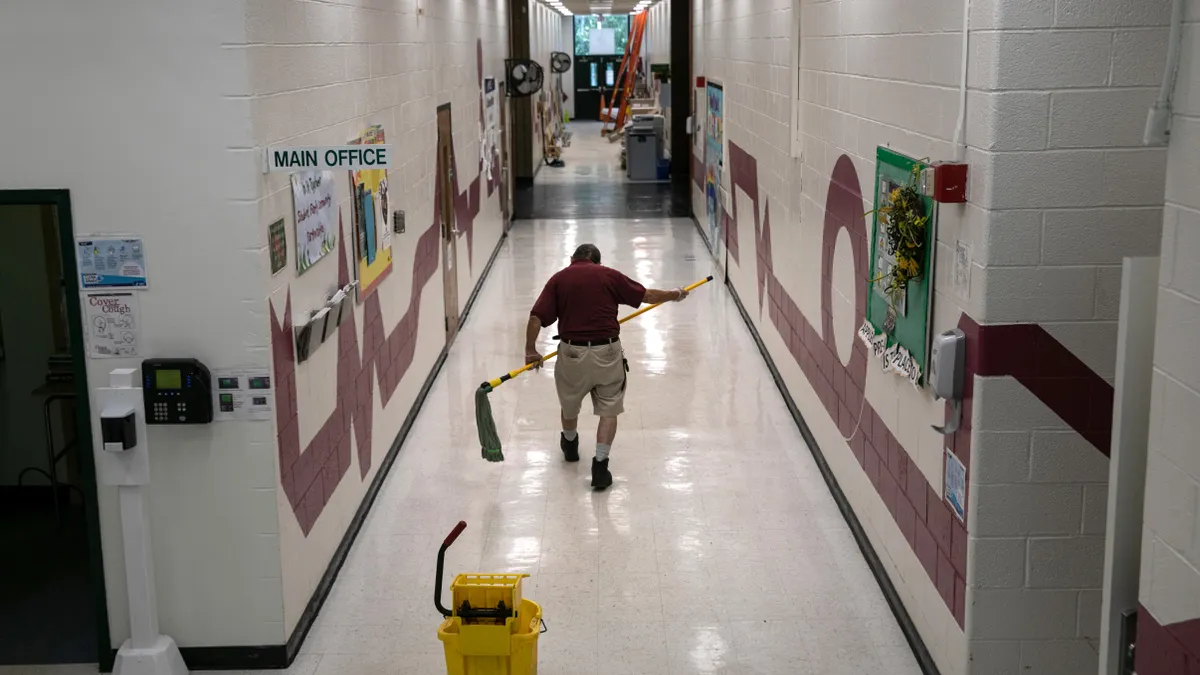Dive Brief:
-
The Biden administration is seeking to qualify 3.6 million low-paid salaried workers for higher wages, according to a proposal published in the federal register last week. The change would potentially qualify many school district employees for overtime pay and impact how districts configure their budgets.
-
The U.S. Department of Labor's current regulations make teachers and administrators exempt from qualifying for overtime pay. The proposal does not make any changes to that, meaning teachers and administrators will continue to be ineligible for overtime.
-
However, the proposed rule would guarantee overtime pay for most salaried workers earning less than $1,059 per week, or about $55,000 per year. That's a large bump up from the current threshold, which allows overtime pay only for those making less than $684 per week, or $35,568 per year.
Dive Insight:
While the rule doesn't change overtime eligibility for teachers and administrators — an overhaul that some expected and feared would significantly change district spending — it does still mean increased costs for districts.
"I think that it certainly is going to result in increased costs for schools, to the extent they're going to be increasing salaries to meet the new minimum salary requirements," said Natalie Bare, employment lawyer for Duane Morris law firm. "If it goes into effect, it's a really big bump."
Districts should start preparing now for potential changes when the final rule goes into effect, said Bare, by first determining which positions would be affected.
Some positions that may be impacted include, but are not limited to, school bus drivers, coaches, food service workers and building maintenance workers.
The proposal would implement the Fair Labor Standards Act in a way that would boost wages by making more workers eligible for overtime pay.
Prior to its release, many K-12 and education-related organizations warned the Biden administration against changes, hoping that the Department of Labor would abandon or at least postpone rulemaking in light of COVID-19 changes to the workforce.
"Many businesses are not well-positioned to absorb new labor costs associated with changes to the overtime pay regulations, and such changes would only exacerbate the difficulties businesses are currently facing," said a May 2022 letter sent to former Secretary of Labor Marty Walsh. Those hoping to delay the rule included AASA, The School Superintendents Association, and the Association of School Business Officials International.
With the pending proposal, districts will now have to determine how their costs and budgets may change.
"And so what this looks like for districts is they have to assess what their staffing patterns are," said Noelle Ellerson Ng, associate executive director for advocacy and governance at AASA. "How many of your staff would qualify for overtime [under the new rule], but currently don't because they make too much?"
Once districts determine the affected positions, they should be evaluating the options for each, Bare said. "And there are many considerations."
While much of it will be determined on a case-by-case basis, there are generally two options that schools may consider: bumping up an employee's salary to exempt them from overtime, or being prepared to pay overtime costs while trying to effectively track and potentially limit the overtime hours employees work.
In one scenario, one employee could currently fill two part-time roles and would qualify for overtime under the new rule. Districts might consider if it's more fiscally prudent to hire full-time staff to cover those positions at a non-overtime rate, said Ellerson Ng. Or it's possible that paying overtime instead could be an effective recruitment and retention tool.
"That's a question and conversation that the district can navigate," added Ellerson Ng.
In the meantime, districts should keep in mind that the final rule may look different from the current proposal. Stakeholders have 60 days from the time the proposal is published to comment, after which the Department of Labor will consider feedback and issue a final rule.
"But there are ways to prepare for implementation," said Bare, including developing template communications to employees and providing training for managers. Districts may also want to revisit handbook policies and update other school-issued documents to reflect the final rule.
It’s important to note, however, that state laws on overtime pay and wages differ nationwide, potentially changing how the federal proposal is implemented on a local level, said Bare.







 Dive Awards
Dive Awards





